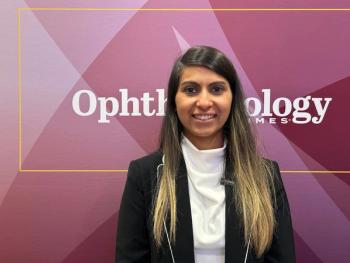
- Ophthalmology Times: October 15, 2020
- Volume 45
- Issue 17
ICLs: Investigators finding robust and stable results over long term
Physicians often use lenses due to abnormal corneal topography or high myopia
This article was reviewed by Kyle T. Packer, MD
Posterior chamber implantation of implantablecollamer lenses (ICLs) provided robust, stable results in a young population during an 11-year period.
Most of the data are significant out to 8 years of follow-up, according to Kyle T. Packer, MD, who is with the US Army and practicing in Hanover, New Hampshire.
The results were garnered from a retrospective longitudinal study of 3004 eyes implanted with the ICLs at a US military treatment facility from 2008 to 2019.
Related:
All patients underwent standard refractive procedures and measurements preoperatively and postoperatively.
The median patient age was 25 years; 67% of patients were men. The median baseline spherical equivalent (SE) was –5.87 D.
Packer reported that the mean SE turned slightly myopic over the first 7 years postoperatively. The mean uncorrected visual acuity (UCVA) exceeded 20/25 and the mean best-corrected visual acuity (BCVA) exceeded 20/20 in all patients out to postoperative year 7.
ICLs were implanted in patients because of the presence of abnormal topography or moderate or high levels of myopia.
A comparison of the preoperative and postoperative BCVA showed that about 40% of patients had a gain of a minimum of 1 line of BCVA during the first year after implantation, indicating the safety of the ICLs.
Related:
The endothelial cell count decreased over time postoperatively compared with the baseline, which resulted in a significant overall decrease of 14.4% from baseline to the 5-year time point.
Patients had a significant increase in the IOP to the 1-year time point, and decreased from years 2 through 8.
The vault was estimated as a percentage of the corneal thickness. Low vaults were defined as less than 50% of the corneal thickness, ideal vaults from 51% to 200%, and high vaults over 200%. In this patient population, most vaults were considered ideal.
“The trend over time was a decrease in the vault size, especially after year 7, with no vault size over 157% of the corneal thickness,” Packer said.
Adverse events occurred in 1.2% during the 11-year follow-up, which included the formation of visually relevant cataracts, glaucoma, retinal detachment, and traumatic incision opening. The ICLs were removed in 4.5% of eyes in most cases because of low vaults.
Related:
Physicians often use lenses due to abnormal corneal topography or high myopiaThe main takeaways from this study were the following:
(1) ICLs were implanted because of abnormal corneal topography or high myopia;
(2) refractive results associated with the ICLs were robust and stable during the long-term follow-up;
(3) vault size decreased over time, which suggested an increased risk of cataract formation after 7 years;
(4) a decrease in the mean endothelial cell count of about 14.4% at the fifth postoperative year suggested that another study is needed to assess the long-term clinical significance.
Articles in this issue
about 5 years ago
Study: Some RP abnormalities are linked with lower visual acuityabout 5 years ago
Teleretinal screening: Effective, less costly option for DRabout 5 years ago
Investigators challenge IOL power calculationsabout 5 years ago
The history of progress and innovation in cataract surgeryabout 5 years ago
Exploring four decades of change in retinaabout 5 years ago
Rejuvenation of outflow system: The time has come for procedureabout 5 years ago
Glaucoma 45 years later: Much changed, much unchangedabout 5 years ago
Celebrating a pivotal moment in laser-vision correction historyabout 5 years ago
Deep learning algorithm proven accurate for AMD classificationNewsletter
Don’t miss out—get Ophthalmology Times updates on the latest clinical advancements and expert interviews, straight to your inbox.
















































.png)


